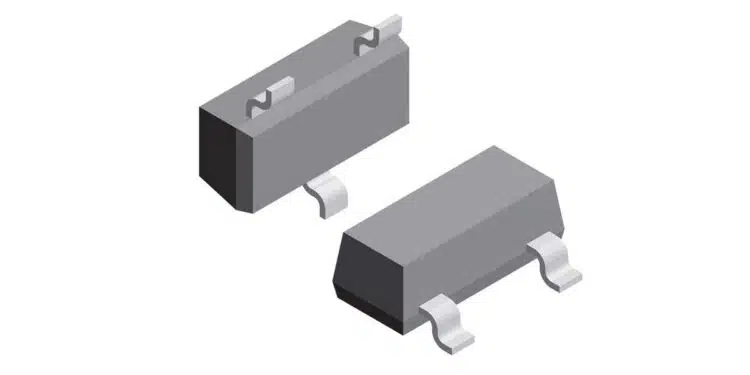Vishay introduced two new series of automotive grade 3.3 V to 36 V ESD protection diodes in the SOT-23 package designed for high current rating applications to 44A at 8/20 µs pulse.
Offering low thermal resistance, the single-line VGSOTxx and two-line VGSOTxxC series ensure more efficient heat dissipation than the previous-generation GSOTxx / xxC devices, allowing for a more robust design that enables higher peak pulse power ratings up to 540 W and current ratings up to 44 A at an 8/20 µs pulse.
With their high power and current capabilities, the Vishay Semiconductors devices released today are ideal for a wide range of applications.
They will be used in automotive electronics and controls, fuel cells, and smart systems; energy monitoring and metering systems; industrial automation systems, motor drives, and power tools; computers and computer peripherals; consumer appliances and entertainment and healthcare devices; fixed and mobile telecom infrastructure; medical instrumentation; and military electronic warfare systems.
The VGSOTxx and VGSOTxxC series can both be used as unidirectional ESD protection devices. With their dual, common anode configuration, VGSOTxxC series components can also serve as bidirectional devices. If higher power is needed, their dual diodes can be used in parallel to double their surge power ratings, line capacitance, and reverse leakage current.
RoHS-compliant, halogen-free, and Vishay Green, the VGSOTxx and VGSOTxxC series provide ESD immunity in accordance with IEC 61000-4-2 and ISO 10605 (± 30 kV air and contact discharge), in addition to the AEC-Q101 human body model: class H3B (> 8 kV).
The devices provide direct drop-in replacements for Vishay’s previous-generation GSOT diodes and competing SOT series devices, and are available in AEC-Q101 qualified versions. These new products also fulfill the Vishay Automotive Grade requirements to ensure continuously excellent quality at the highest level.
Samples and production quantities of the new ESD protection diodes are available now, with lead times of 12 weeks.
FEATURES
VGSOTxx
- Single-line unidirectional ESD protection diode
- ESD immunity acc. IEC 61000-4-2 and ISO 10605 ± 30 kV contact discharge ± 30 kV air discharge
- ± 30 kV contact discharge
VGSOTxxC
- Two-line unidirectional ESD protection diode
- Common anode
- Can be used as bidirectional protection diode































